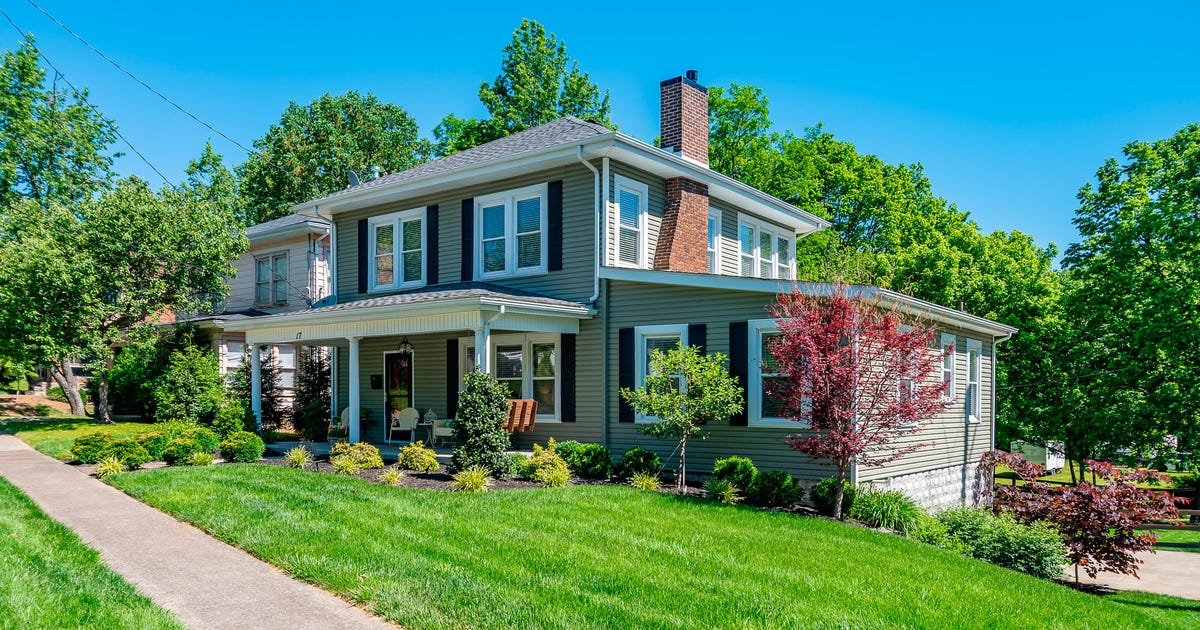30-Year Refinance Rates For August 2022

30-Year Refinance Rates for August 2022
If you own a home, refinancing your mortgage can provide some breathing room to your monthly budget. When you refinance, you take out a new loan on your home to replace your current mortgage, and the goal is to secure yourself a lower interest rate in the process. Refinancing to a lower rate can help lower your monthly mortgage payments and give you some financial flexibility -- a critical boost to any household in 2022 as inflation keeps rising.
Here's what you need to know about a 30-year fixed-rate refinance mortgage -- the most popular type of refinance home loan -- and how to find the best lenders and rates available to you.
Current 30-year refinance rate trends
30-year refinance rates are hovering in the low-to-mid 5% range in August, having dropped slightly since the Federal Reserve's most recent interest rate hike. Mortgage rates tend to rise or fall depending on what's happening with the economy, and are also impacted by the funds rates set by the Federal Reserve. In response to skyrocketing inflation, the Fed has raised interest rates four times this year, the first increases since 2018. With inflation still soaring, multiple more rate raises are expected throughout 2022, though it's likely mortgage rates will even out as long as the Fed continues to act in line with market expectations.
A 30-year fixed-rate refinance could save you tens of thousands in interest if you're able to secure a lower rate. Here are the pros and cons to consider when deciding if a 30-year fixed refinance is right for you.
Pros of a 30-year fixed refinance
- Lower monthly payments: One of the biggest benefits of refinancing is reducing your monthly payment with a lower interest rate. For example, if you currently have a $1,000 monthly mortgage payment at a 6% interest rate with a $150,000 mortgage balance and 15 years left on your loan, refinancing into a new 30-year mortgage at 4.7% interest rate means you will only pay $777.96 every month, a monthly savings of $222.04.
- Eliminate private mortgage insurance: If you made less than a 20% down payment and have private mortgage insurance, a refi may allow you to get rid of PMI.
Cons of a 30-year fixed refinance
- Paying more interest over the life of the loan: Although a 30-year refinance will lessen your monthly payments, you will end up paying thousands of dollars more in interest over the course of the loan, since you'll be paying interest for a longer amount of time.
- It requires upfront costs: You will have to pay closing costs and additional lender fees in order to complete your refinance transaction, which could cost thousands of dollars upfront. In 2021, average refinance closing costs were almost $2,500 for a single-family home in the US.
- Longer loan-term: If you refinance into a new 30-year mortgage it will take you longer to pay off, giving you less financial flexibility in the future.
- It will take longer to build equity in your home: Since you're extending your loan terms, it can take you more time to build up equity, which means you may not be able to take advantage of a cash-out refinance. You typically need 20% equity in your home to qualify for a cash-out refinance.
Current mortgage and refinance rates
We use information collected by Bankrate, which is owned by the same parent company as CNET, to track daily mortgage rate trends. The above table summarizes the average rates offered by lenders across the country.
FAQs
What is a 30-year fixed refinance?
A 30-year fixed-rate refinance is a loan you take out to pay off your current mortgage, and it becomes the new mortgage you are paying off every month. The interest rate is fixed and you must pay off the loan in 30 years. The most common reasons to refinance with a 30-year fixed-rate loan are to lower your monthly payments and your interest rate. A 30-year fixed-rate loan is the most popular type of home loan.
How do I qualify for a 30-year fixed-rate refinance?
Whether or not you qualify for a 30-year fixed-rate refinance is determined by lenders, who use a handful of factors to decide your eligibility. Your income, your credit score, how much debt you're carrying, and your loan-to-value ratio all affect the rate a lender will offer you.
Is a 30-year refinance right for me?
The decision to refinance is different for everyone and depends on a few key variables: The interest rate of your current mortgage, whether you need access to a larger monthly cash flow and how much of your mortgage you've already paid off. If you plan to move in a few years, it may not be worth it to refinance because you will be stuck with a long-term loan for a home you're selling before you've paid off your refinanced mortgage.
It's important to shop around with different lenders to find the right refinance loan for you.
More refinance tools and resources
Refinancing can be a valuable tool for stretching your monthly budget over the course of paying off your mortgage. Even though refinance rates are rising, they are still historically low, offering millions of homeowners the chance to save money every month. By taking into account the factors that make up your personal financial situation and comparing multiple lenders, you can find the best possible 30-year fixed refinance rate available to you and start saving on your monthly mortgage payments.
Source




